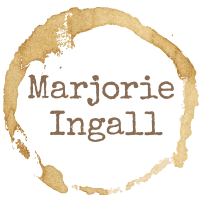The winners were announced on Tuesday. In the Children’s and Young Adult Literature category, the winner was Deadly by Julie Chibbaro. I cannot say enough about this book. As I wrote in Tablet magazine, “This medical thriller is so exciting it’s like an episode of CSI with pages. It’s 1906, and a poor 16-year-old girl from the Lower East Side gets a typing job at the Department of Health and Sanitation. Her boss — on whom she develops a raging crush — is working on a new theory of disease transmission, and soon Prudence joins him in hot pursuit of Typhoid Mary. Like the Newbery-Honor-winning Evolution of Calpurnia Tate
, this is really the story of a girl’s intellectual awakening. It’s not about marrying the cute doctor; it’s about realizing you could be a doctor. I admit it: I cried.”
I also really liked Music Was It, by Susan Goldman Rubin, one of the three finalists. What I wrote in Tablet: “I opened this with a sigh, expecting the usual dense, hyper-sincere, spinach-y, plodding Jewish biography. I was wrong. This book reads like a juicy novel, and Rubin’s copious research is seamlessly integrated into the story. Kids with singular passions will relate to young Lenny’s love of music and his determination to make it his career despite his unsupportive father’s constant demands that he go into the family perm-equipment business. The book follows Lenny from childhood through his triumphant conducting debut at Carnegie Hall. It’s an effortless read, and even I, a philistine who cares not a whit about classical music, was swept up.”
I have nothing against the other finalists, but I think my agenda is different from the Jewish Book Council’s. My first priority is the literary and artistic caliber of the book; its moral and Jewish educational values are further down the list for me.
In the Illustrated Children’s Book category, the winner was The Golem’s Latkes, adapted by Eric A. Kimmel and illustrated by Aaron Jasinski. While Eric Kimmel is certainly a Jewish kidlit rock star, I didn’t personally adore this particular book. Purely a matter of taste. The illustrations are cute, cartoon-y and conventional, and I like my golems scary. The book turns an unnerving story set against a backdrop of anti-Semitism and danger into a cuddly, Disney-esque version of the Sorcerer’s Apprentice, with little potato carb bombs instead of dancing mops. In this version, the chief rabbi orders his servant girl to get ready for the holiday, but she’s lazy and awakens his golem and tells the golem to do everything while she goes off to gossip with another maid in the village. So of course the golem won’t stop making latkes, and the rabbi finds out, but oh ho ho, no worries  — we’ll just invite all of Prague to a latke party! It’s adorable! But (to over-read), in the Disney Sorcerer’s Apprentice, Mickey wants to be a magician. In this, the maid doesn’t want to be a Maharal; she’s just indolent and gossipy. And she has to be bailed out by the males — her boss and the leader of the goyim. Probably if you are not a humorless feminist like me you’ll lurve it. But I prefer the absofreakinlutely terrifying version of the story, Golem by David Wisniewski (with super-unnerving, dark, torn paper cut  art, it won the Caldecott Medal in 1997). To me, it certainly qualifies as making a distinguished contribution to children’s literature. I’m not sure The Golem’s Latkes does that.
The two National Jewish Book Award finalists in this category, however, are distinguished, I think. They were both on my best of the year list: Lipman Pike: America’s First Home Run King by Richard Michelson, illustrated by Zachary Pullen; and Marcel Marceau: Master of Mime
 by Gloria Spielman, illustrated by Manon Gauthier. Lipman Pike brings a little-known but fascinating historical figure to light, and does so with trippindicular, spectacular illustrations. And Marcel Marceau taught me brand-new things about a historical figure I thought I knew. (Dude joined the French Resistance at 16 to fight the Nazis! He used his artistic skills to doctor photos and forge ID cards to make other children look too young to be sent to death camps! He secretly led groups of Jewish children across the Swiss border to safety!) And again, the art is terrific — luminous and moving.
The book I’m really sad wasn’t honored: Flesh and Blood So Cheap: The Triangle Fire and Its Legacy by Albert Marrin. It was a National Book Award Finalist, and deservedly so. As I said in Tablet, “Marrin’s storytelling is fluid and fast-paced; the book’s jam-packed with eye-catching photos (some gruesome); and Marrin offers a nuanced explanation of the fire and its legacy, both national and global, in a well-designed, oversized volume. Essential.” I suspect it wasn’t deemed “Jewish enough” to be worthy of commendation (and it is certainly politically left-leaning in its discussion of sweatshop conditions today), but hey, what do I know.


Thanks for mentioning these awards. I didn’t have them. I also liked Flesh and Blood So Cheap, and want to read Deadly. Sounds like my kiddo would like the latter, too.
I agree re. Golem’s Latkes – we got it at home as a PJ Library title, and were pretty underwhelmed. My library didn’t order it initially, for the same reasons you mention, though we’ll be getting one copy on the strength of the award. Book awards are tricky, it’s incredibly difficult to be “objective” about literature. But hey, that’s what blogs and “best of” lists are for, right?
My hold for Deadly just came in, and I’m itching to get started, but first I have to finish City of Glass, the third installment of the Mortal Instruments series (Jewish vampires FTW!)…
Jewish vampires??? I’M IN!